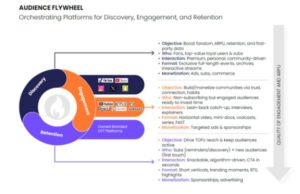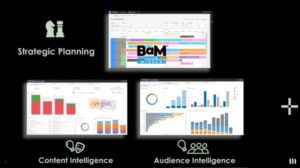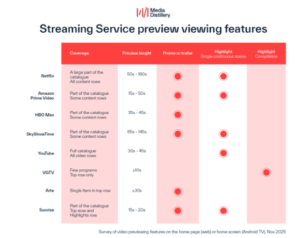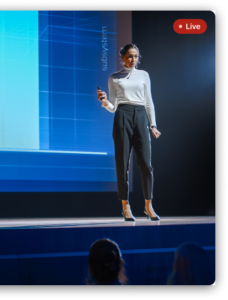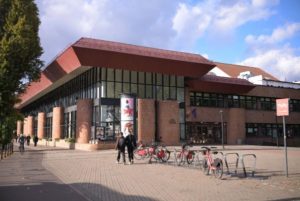Projective – Breaking free from the hardware cycle: a new era in postproduction

Derek Barrilleaux, CEO, Projective
When considering traditional technology deployments within post-production and broadcast companies, the term “cycle of hardware” highlights a common situation for media technology buyers. Every 2-5 years, companies find themselves entangled in a relentless cycle of sourcing, implementing, powering, and retiring physical hardware – servers, storage systems, backup solutions.
The cycle of hardware is often an arduous and time-consuming process that can span years, to the extent that a new cycle often begins as soon as the last one concludes. It reminds me of window cleaners on skyscrapers, who, just as they finish cleaning the last pane of glass on the bottom floor, must start again from the top. Similarly, the operational expenditure (OpEx) investment cycle on both hardware and ancillary costs (such as power, cooling, migration and backup) continues in a seemingly endless loop.
This recurrent hardware migration is not just labor-intensive; it’s inefficient and costly. It drains valuable resources from your IT team, preventing them from focusing on higher-value tasks.
However, there’s a better way to break free from this purchasing and deployment cycle. In this article, we explore the inefficiencies of traditional hardware cycles in post-production and discuss a more sustainable and efficient solution through cloud-based technology.
The inefficiency of the hardware cycle
The hardware cycle is a significant operational burden for businesses in the media and entertainment space. Here’s why:
- Resource intensive: Implementing new hardware requires extensive time and effort, from evaluating platform needs, sourcing, negotiating prices, and redesigning infrastructure to migrating applications, data, backups, and archives.
- Continuous maintenance: Physical hardware needs constant monitoring, updates, and troubleshooting, which diverts your IT team from strategic projects.
- High costs: Frequent hardware upgrades escalate capital expenditures (CapEx) and operational expenditures (OpEx), impacting the bottom line.
- Environmental impact: Powering and cooling physical servers contribute to high energy consumption and carbon footprints, contradicting many companies’ sustainability goals.
The Case for cloud-based solutions
Transitioning to a cloud-based approach can break the hardware cycle, but true value cannot be realized if it doesn’t also enhance working practices. Numerous cloud tools can assist with specific areas in post-production, such as review and approval, file sharing, or serving as an asset library. However, creative project workflows are still left to their own devices—both figuratively and literally. Seeing our customers ship hard drives to deliver projects to their teams in 2024 highlights the immaturity of current cloud technology implementations. Merely having cloud storage or platforms on the edges of post-production workflows fails to address their core: the projects themselves.
These were the principles that guided us at Projective in creating Strawberry Skies, a cloud-based platform that addresses the challenges of hardware cycles. As a well-established post-production collaboration solution, Strawberry has always delivered intelligent project management, sharing, permissions, as well as comprehensive search capabilities and automation for our customers worldwide.
With Skies we wanted to enhance those capabilities by adding secure cloud access, remote flexibility and unparalleled scalability for post-production workflows. The fully cloud-hosted platform delivers a seamless, scalable solution for post-production environments. It provides a creative project framework that allows teams to collaborate, share resources, and manage projects efficiently, all without the limitations of physical hardware.
Post-production in the cloud
Transitioning from on-premises hardware to cloud-based solutions streamlines operations and offers numerous workflow-specific advantages for post-production teams:
- Global access: Teams can collaborate seamlessly from anywhere, reducing travel needs and costs.
- Security and compliance: Enhanced access control and automated project structures keep your data secure, with tailored permissions and quota settings.
- Flexibility and scalability: Cloud solutions like Strawberry Skies allow businesses to easily adjust infrastructure to meet demands, transitioning from CapEx-heavy investments to manageable OpEx models. This mitigates the need for ongoing hardware investment and maintenance, enabling IT teams to focus on innovative projects.
- Increased efficiency: Cloud-hosted tools reduce administrative tasks, allowing teams in the media and entertainment sector to concentrate on creating and distributing compelling content.
- Enhanced sustainability: Moving to cloud-based infrastructure lowers the environmental impact by reducing power consumption from physical servers, aligning with corporate eco-friendly strategies.
This strategic shift enhances creative output and productivity while optimizing costs and promoting sustainability.

Real-world example: TUI’s success
Let’s look at a real-world example of how cloud adoption has revolutionized post-production operations. TUI, a global leader in the leisure, travel, and tourism industry, produces a substantial amount of video content for its international portfolio of hotels, cruises, aircraft, and travel agencies. The business was facing inefficiencies with their on-premises production systems. In addition, their geographically dispersed team struggled with collaboration, slow content creation, and high energy consumption.
Through the implementation of Strawberry Skies powered by Skies Drive by LucidLink, TUI’s Western Region team transformed their content production process, enabling real-time collaboration across geographically dispersed teams, minimizing inefficiencies and costs. Creative projects can now be completed in a fraction of the time, while the need to physically move crews and equipment has been significantly reduced.
TUI achieved significant improvements including cost-effective scalability, predictable pricing, operational efficiency and energy savings from reduced server reliance – all contributing to better financial planning and more sustainable operations.
Bart Saerens, TUI’s Solution Architect, states: “The Projective solution has enabled TUI to be very cost efficient and have a more aggressive marketing strategy.”
You can read the full story HERE.




